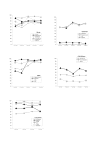How to promote, improve and test adherence to scientific evidence in clinical practice
- PMID: 16171523
- PMCID: PMC1253511
- DOI: 10.1186/1472-6963-5-62
How to promote, improve and test adherence to scientific evidence in clinical practice
Abstract
Background: Negative variation in the management of patients with the same clinical condition is frequent, and affects quality of care. Recent studies indicate that single interventions are not an effective solution. We aim to demonstrate that a multifaceted strategy can favor the introduction of research into practice, and to assess its long-term effects on a set of common medical conditions exhibiting significant negative variation at our institution.
Methods: The strategy, devised and agreed upon by a multidisciplinary group, was first applied to one relevant medical condition--cerebral ischemic stroke. To test its effectiveness a quasi-experimental study was conducted, comparing an intervention group with historical controls. After validation the strategy was extended to other pathologies, and its long-term effect measured using evidence-based quality indicators. Adherence to each indicator was determined prospectively on a six-month basis for a period of at least two consecutive years. Measures are expressed as proportions with 95% confidence intervals.
Results: Validation findings demonstrated that the strategy improved compliance with scientific evidence: the percentage of patients who received a CT scan within 24 hours of hospital presentation rose from 56% to 75%, (chi2 = 7.43 p < 0.01); admissions to selected wards increased from 45% to 64%, (chi2 = 7.81 p < 0.01); the number of physical medicine visits within 24 hours of the request grew from 59% to 91% (chi2 = 14,40 p < 0.001). Over a four-year period the program was gradually applied to 14 medical conditions. Except for 3 cases, compliance with the pathway, i.e. number of eligible patients for whom data on the care process is collected, was above the minimum requirement of 75%. Indicator adherence generally exhibited a positive trend, though variability was observed both among different conditions and between different semesters for the same pathology.
Conclusion: According to our experience, incorporation of research into practice can be favored by systematically applying a shared, multifaceted strategy, involving multidisciplinary teams supported by central coordination. Institutions should device a tailor-made approach, should train personnel on implementation strategies, and create cultural acceptance of change. Just like for experimental trials, human and economic resources should be allocated within health care services to allow the achievement of this objective.
Figures


References
MeSH terms
LinkOut - more resources
Full Text Sources

